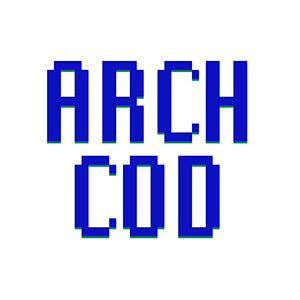alphaville builds house of stacked tsuboniwa gardens within the urban landscape of kyoto
a house of stacked Tsuboniwa gardens by Alphaville architects
Alphaville Architects has designed a new family house as a cluster of stacked Tsuboniwa gardens in Kyoto, Japan. The configuration of the residence emphasizes verticality, in order to create effective outdoor spaces on the limited lot while blending into the urban environment.
Each of these exterior spaces acts like a polygonal prism, giving the inhabitants of the long and narrow house a sense of space that extends in all directions. As the Japanese architects describe, these outdoor areas are carved out of the house in three dimensions, and whether deep or open to the sky or with views of the city in the distance, they also create a new expression of Kyoto.
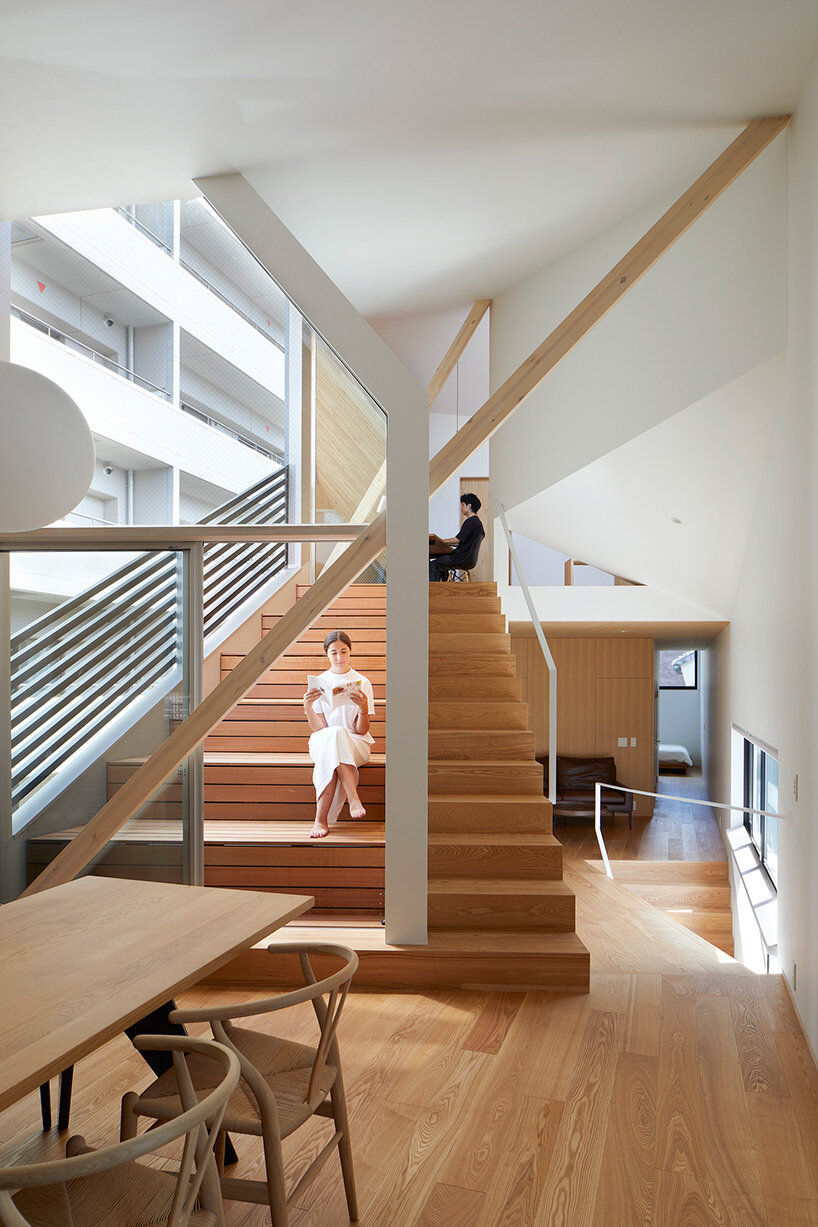
void areas are carved out of the house to create spacious inner courtyards | all images courtesy of Alphaville Architects
outdoor spaces carved out of the house
Since the clients are a family with young children, the design had to incorporate several spacious outdoor areas such as a courtyard, a terrace, and a bright garden. These spaces were carved out of the house in three dimensions to promote an active lifestyle that develops around them.
An axis inclined to the urban grid was introduced into the carving as an auxiliary line so that it extends diagonally across the property to the busy Teramachi Street, which the house faces, allowing the view from inside the house through the outdoor spaces to the city and allowing light and wind to penetrate the interior of the house. ‘This is a three-dimensional Tsuboniwa garden.’ explains the team at Alphaville Architects (find more here). To allow the passage of people, visual axes and nature, from the first to the third floor on the inclined axis, no load-bearing walls were installed, but simple hanging struts.
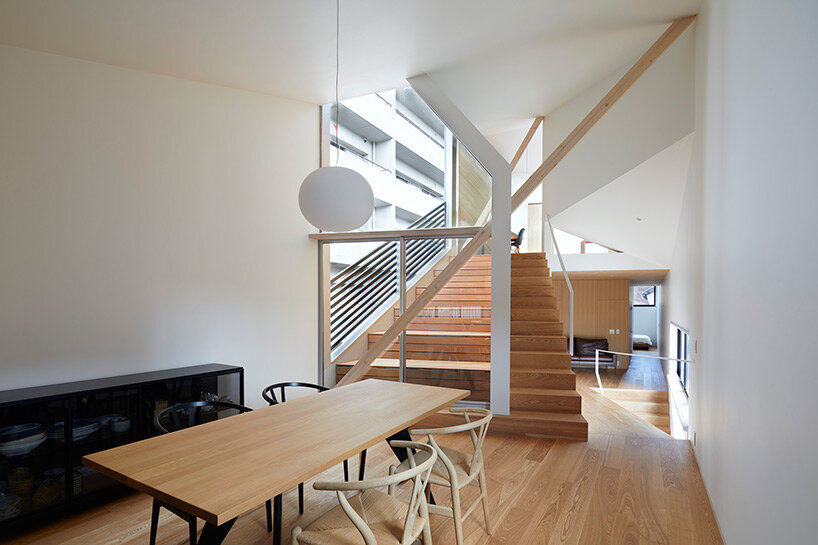
exposed diagonal braces add a distinct visual character to the interior
exposed supportive Braces emerge within the interior
The configuration of the front and rear skip floors, connected by stairs and ramps in the central atrium, is consistent with previous residential projects by Alphaville. ‘This time, we focused on enhancing the void spaces (patio, terrace, and light garden) inserted in the central atrium, which is a different logic from the orthodox townhouse volume.’ the architects share.
While, in some parts of the interior braces are placed inside the walls, in the central atrium, in order to preserve the independence of the voids, it was decided to leave the braces exposed. The use of these struts provides a distinctive visual elements within the living environment, and ‘responds to the quality of the room’ as the Alphaville team states.
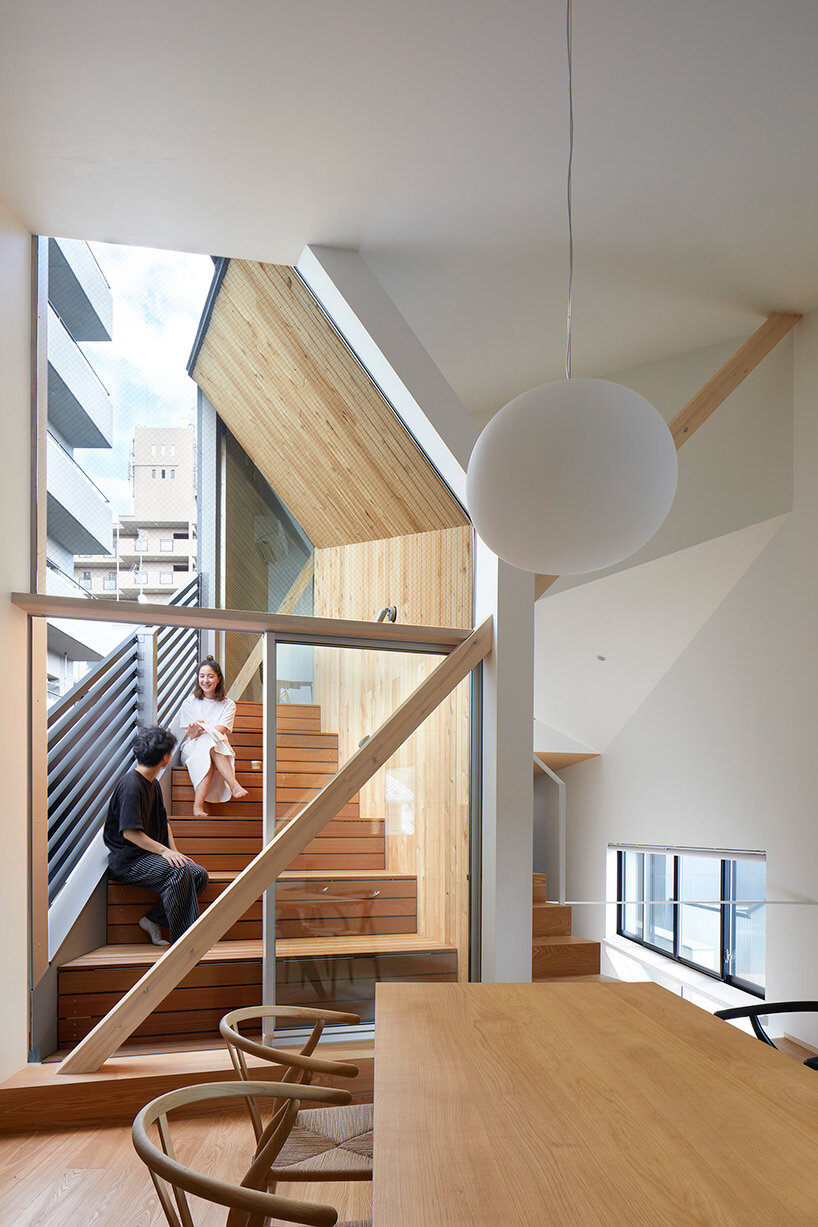
each of the exterior spaces acts like a polygonal prism
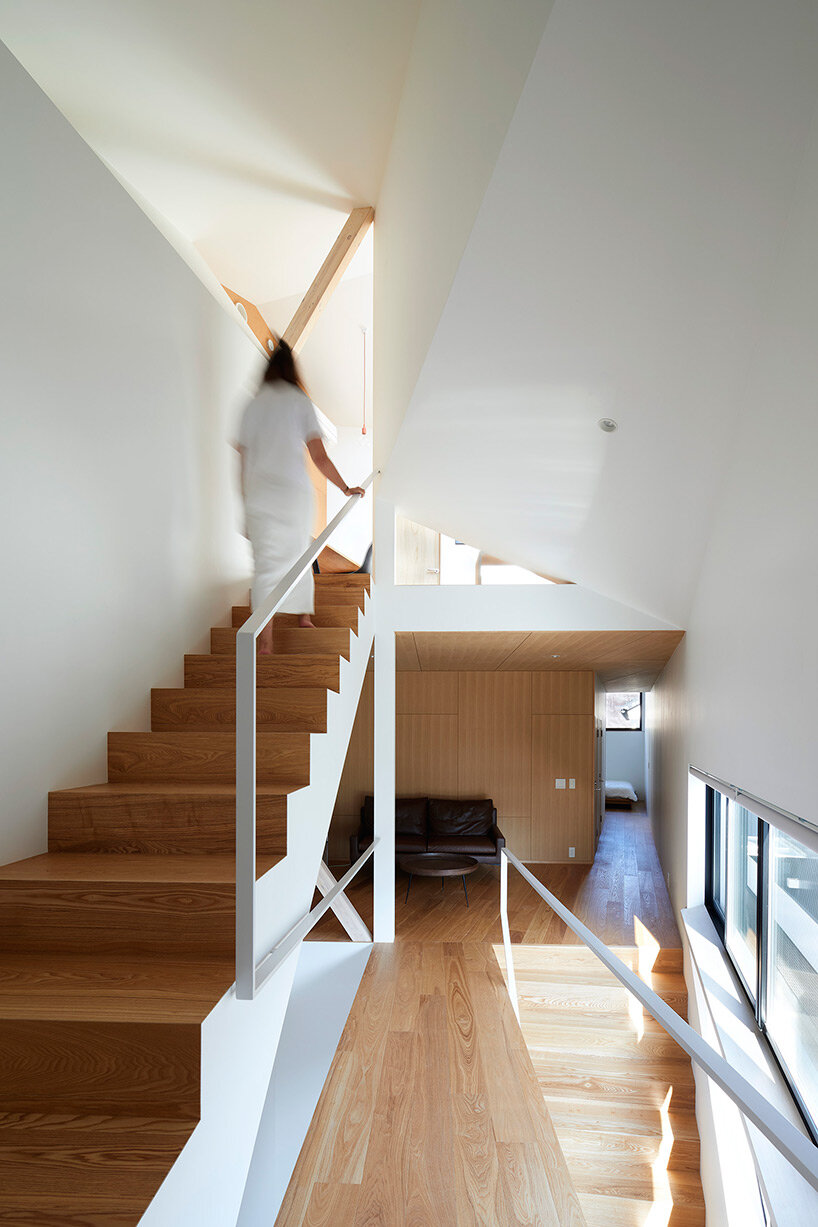
the design puts emphasis on verticality
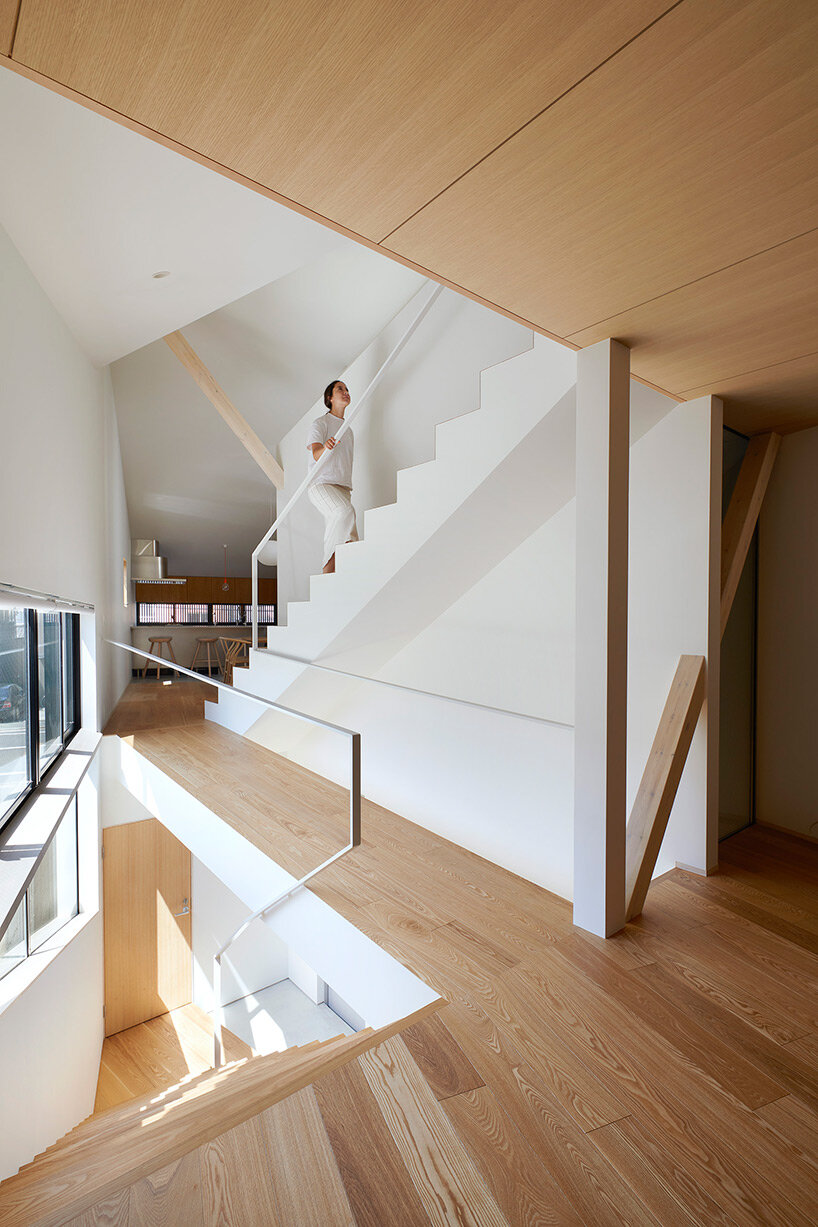
geometric elements emerge within the interior
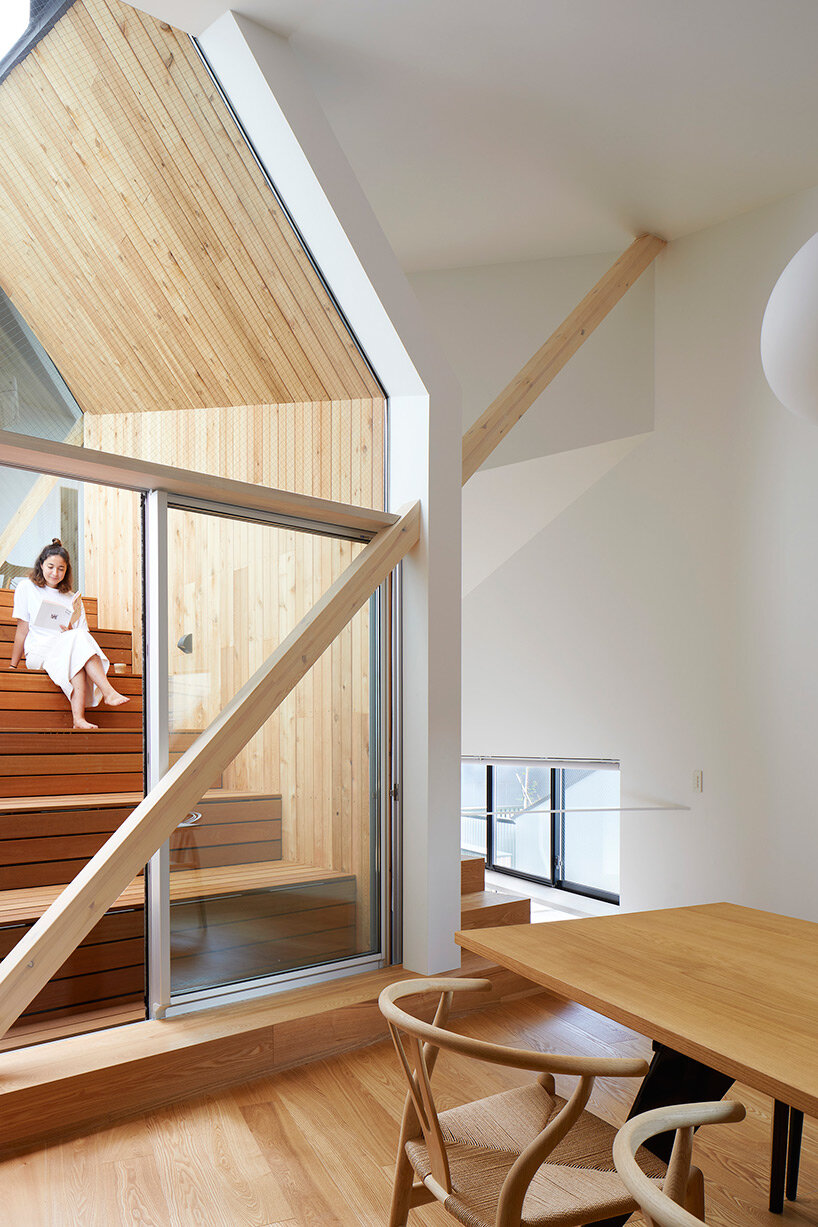
the inner garden draws light into the house
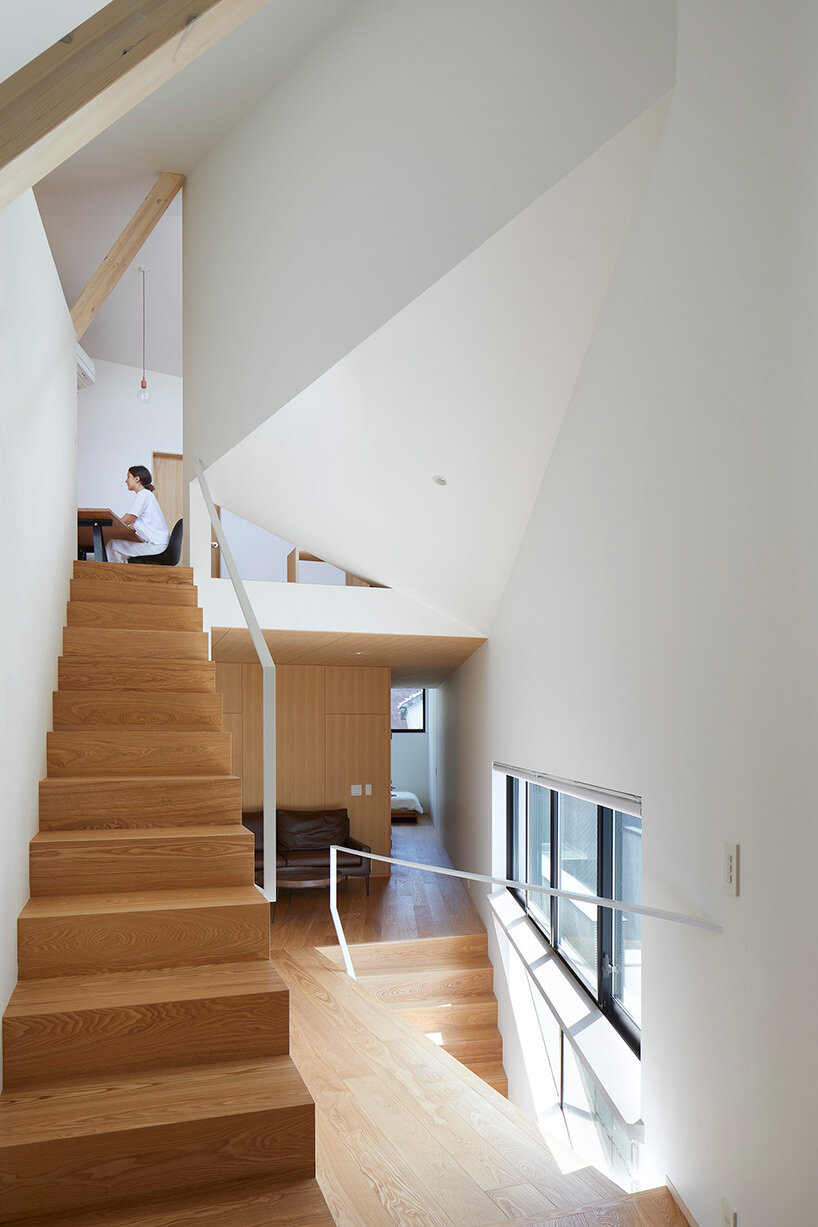
multiangular void areas can be observed in the house
